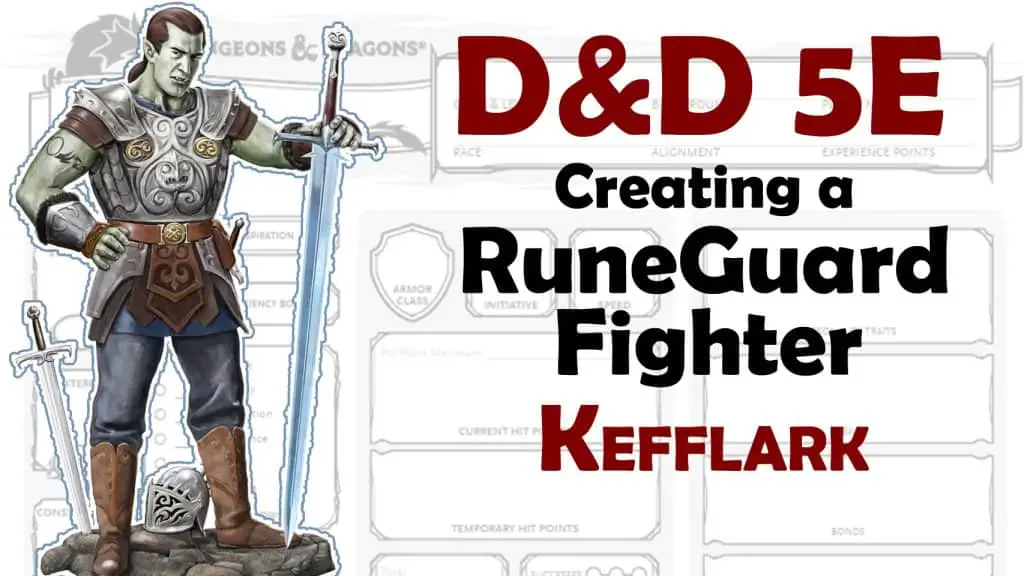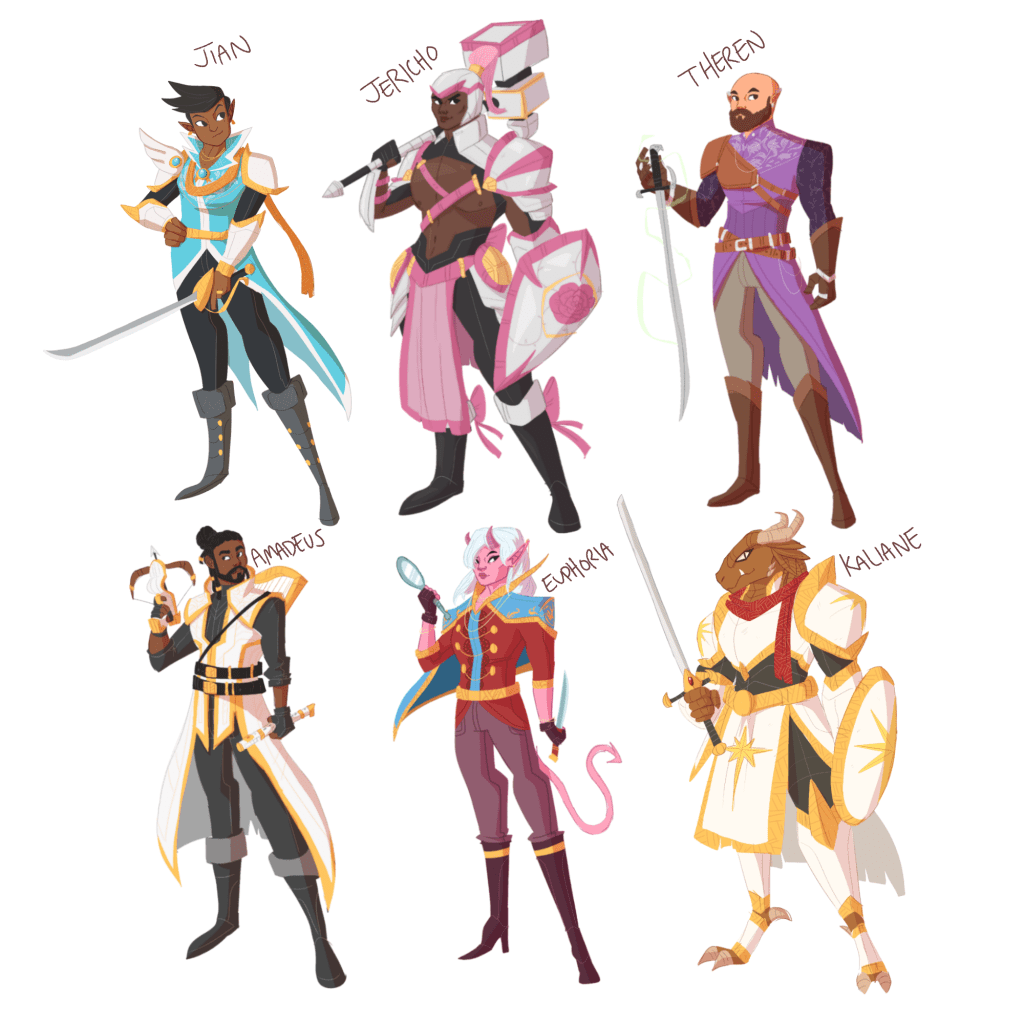Tabletop games and their popularity skyrocketed when Dungeons and Dragons were released, earning its crown as the most successful and overly popular fantasy tabletop role-playing game ever. People enjoy role-playing fantasy games with their friends and families on any occasion, whether a five-year-old’s birthday bash or a twenty-five-year-old’s graduation party. You can enjoy this game any time, but do you know its basic tactics? If your friends recently discussed playing this game with you and want to learn about the fantasy game’s basics and unique tricks, then, my pal, you are in the right place. Dive deep into this article to learn more about Dungeons and Dragons and how to defeat your fellow players, but not too quickly.

What is DND 5e?
DND 5e is the fifth and latest edition of Dungeons and Dragons, a fantasy tabletop role-playing game. So far, it is the most liked edition ever released by DND.
Understanding what Dungeons and Dragons are can be challenging if you have never played. In this article, I will clarify what Dungeons & Dragons is and how it works. The fantasy role-playing game Dungeons and Dragons was initially released in 1974. Most players take on the roles of adventurers, such as elves, warlocks, and dwarf paladins. The Dungeon Master is one of the players who run the game, controls the monsters and non-player characters, and explains the story. Dungeons and Dragons (DND) is a game that never ends, where everything can happen, and no one and everyone wins.
Does this sound dumbfounding? It’s a relatively simple concept. Your team embarks on adventures in Dungeons and Dragons. A team may consist of various characters with varying strengths and weaknesses. It’s a role-playing game as well. You are an actor when you role-play. It’s not what you would do if you took on the role of that character. That’s precisely what they would do. What do you think they would say? It’s entertaining to try on several personas. You most certainly played the 5th edition if you have just enjoyed a couple of matches of Dungeons and Dragons over the last several years. It is the latest and most frequently used edition. It is perhaps the most adored edition due to the addition of unique features and accessibility of a player’s handbook.
The method to calculate a particular character’s or a monster’s stealth in Dungeons and Dragons is given briefly below.
How to calculate stealth in DND 5e?
An ability or stealth check measures a character’s or monster’s physical skills and training amid difficulty. The GM requests a stealth check whenever a player or monster acts (other than an attack) that risks failing. The dice decide the results whenever the result is in doubt. Roll a d20 and add the appropriate skill factor for authentic stealth checks.
Calculate bonuses and penalties as you would with regular d20 rolls, then contrast the total to the DC. The stealth check succeeds if the total equals exceeds the DC and the monster overcomes the current difficulty. Alternatively, it’s a failure, meaning the character or monster doesn’t progress toward the goal or makes progress but experiences a loss decided by the GM.

How does stealth work in DND 5e?
Here is a full brief on how stealth works in Dungeons and Dragons.
Using stealth generally means using the hiding feature. Here is how you hide:
Are you well hidden from the monsters you’re trying to avoid? To begin with, apply the Hide action; if you have specific skills, such as the rogue’s Cunning Action or the Ranger’s Vanish, this may be a bonus activity. Second, compare the results of your Dexterity (Stealth) check to the active perception levels of any monster you are hiding from and any active Wisdom (Perception) checks used to find you. Continue to use the same Dexterity (Stealth) result unless you are discovered or not permanently hidden.
While you are hidden:
You have an advantage on attack rolls against creatures who can’t see you when you’re hiding. Whether the attack succeeds or fails, you expose your presence, which is no longer hidden when you make an attack. If a creature tries to attack you while you’re hiding (and can predict where you are), it will have a disadvantage on its attack roll.
Keeping a low profile:
You stay concealed until you are discovered, and you stop hiding when your surroundings prevent you from covering, making a noise, or otherwise alerting people of your presence. To stay concealed, you don’t have to use the Hide action every round; however, once you’ve been detected or stopped hiding, you’ll need to use it again. However, you should always be alert, as this could be complex to track, as being hidden is relative to each creature.
Where can you hide:
According to the Player’s Handbook, you “can’t hide from a creature that can see you.” If conditions allow, DMs or Dungeon Masters should enable a player character to creep up on a distracted creature, even abandoning their concealment, according to the book. “An invisible monster can always try to hide,” it continues, emphasizing that being unseen does not guarantee to be undiscovered. The Player’s Handbook warns that “lightly obstructed” and “heavily hidden” illumination impact what may be seen. Being moderately hidden causes Wisdom (Perception) tests that rely on sight to suffer a -5 penalty, while wholly hidden completely blind creatures to things in the concealed area and causes Wisdom (Perception) checks that depend on sight to fail. It is always best to talk to your Dungeon Master to perform a stealth check, then do it according to the rules.
How to level up in DND 5e?
According to the DND fifth edition player’s handbook, the easiest method to level up is through combat. Combat allows you to gain XP once your character’s level is reached.
‘Leveling up’ is a term used to describe a point in the game where your character gains new abilities and gains greater power. If you do not know how to level up, keep reading! In 5e, your level can be raised in a variety of ways. It mostly depends on how your DM handles your game and the type of battle you are in. While the Basic Rules mention improvement based on experience, there are several ways of getting knowledge. A breakthrough leveling-up method could also be available in many published forms of Player’s handbooks. Combat is the most common way to get experience in RAW (Rules as Written). Each monster has a different difficulty level, which refers to the amount of experience the players gain—your level increases as you gain a particular quantity of XP. You will need 300 XP to move to the second level. Similarly, you would require 600 more XP to advance to the third level. This way, you can quickly and gradually level up in DND.
When should I level up in DND 5e?
You may wonder when I should level up in DND 5e upon reading the above. There isn’t a universal rule, but a few factors must be considered.
Speeding the leveling process:
If your team faces more powerful opponents shortly, they must scale up. You’ll need to boost their strengths and powers beyond their starter numbers and abilities if you want them to face a pit of Gorgons or a baby Green Dragon in week three of the game.
Slowing the leveling process or not leveling up at all:
If your players prefer the plot over the actual fighting, then there is no need for leveling up. Some people prefer playing DND for the story, so if you are among those people, forget to level up and play according to the story.
How is D&D 5E different?
The fifth edition of DND varies according to the other game editions. To begin with, DND 5e reportedly has a newly developed design where players can access combat skills and spells more efficiently. There is also a high XP advancement method.
Dungeons and Dragon’s fifth edition is a lot different than the older editions of the game. Perhaps the most notable difference is in the overall design. The 5e of DND is built around a thoughtful plan. In addition to that, there are no epic levels or prestige classes, and the fifth edition seemingly obtains a high XP progression curve. Moreover, the advantages and disadvantages of the game replaced bonus stacking, making it more accessible for players to level up during combat. It also has less crunch, and the combat actions do not consume hours. There is also a simplification of using spells.
What are the three main aspects of DND?
The fifth edition of DND revolves around three main aspects. Here they are.
Exploration:
Exploration involves the adventurers’ progress around the world and their interactions with creatures and circumstances that require their attention. It also involves all the new places the adventurers could unlock, leading to battles about ownership.
Social interaction:
It simply means interacting with the other side characters involved in the game, such as the Green Goblin, Baby Dragon, and other little creatures. Social interaction can also occur between players and the Dungen Master himself.
Combat:
Characters and other monsters swing weapons, cast spells, move for position, and beat their opponents, whether by killing every enemy, capturing prisoners, or forcing a retreat. The payers can level up and enhance their characters’ abilities and skills through combat.
Should I customize monsters in DND 5e?
It is not always necessary to customize your monster, but if you feel you need to add flavor to your henchmen, you can.
The monsters in the monster manual are necessary for an emergency, but I believe they were designed to be as simple as a clean canvas. Feel free to change their attributes or add new powers and attacks. This is an excellent technique to confuse dungeon masters and players who have read the book. Customizing your monsters can also help you in brutal combats, increasing your XP level.
Does DND 5e have a handbook?
Yes, the fifth edition of DND is continuously supplied to a purchaser with a handbook filled with fundamental basics and references to play the game.
As stated earlier, the game comes with a complete guide called the Player’s Handbook. Each edition of the game has its own published set of handbooks that serve as a home for the essential guide, tricks, and special features included in the game.
Is there going to be a DND 6e?
As per the developer’s latest statement, a new edition of Dungeons and Dragons will drop in two years for the game’s 50th birthday.
After reading the article, you would be thoroughly thrilled by the versatility of the tabletop game. If you purchase DND fresh from the market right now, you will get the latest edition, the fifth. But hold your horses because the developers have shared very excellent news. It is stated that in 2024, when Dungeons and Dragons celebrated their 50th anniversary, a new edition would be released, whether a 5.5 or a 6th edition. Excited? All the fanatics are haywire since the special news release, so you better buckle up and wait!
In conclusion, Dungeons and Dragons is a multiplayer role-playing game in which players interact to create an engaging plot and participate in exciting adventures. It includes many features involving tactics to level up and check your stealth mode. It is essential always to keep an eye on your team members, as teamwork always helps. It’s a fun and fascinating game to get lost in, and it’s a great excuse to see your friends frequently!
- Facebook Ads to Get Followers! - December 27, 2024
- ClickUp vs. Slack - December 20, 2024
- Mastering E-Commerce Analytics: A Blueprint for Success





